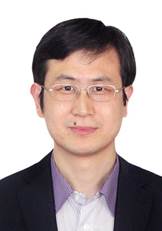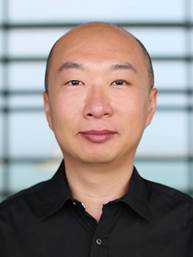CCF@U1098:CCF生物信息学专委走进湖南财政经济学院
CCF走进高校第1098场
敬请关注
由中国计算机学会(CCF)主办,CCF生物信息学专委、湖南财政经济学院承办的CCF走进高校活动,将于2024年6月14日在湖南长沙市金星路湖南财政经济学院召开,敬请关注。
时间:2024年6月14日(星期五)09:00
地点:湖南财政经济学院第二教学楼2J03
报告信息:
报告题目:蛋白质受体与功能分子交互的智能识别方法
报告摘要:蛋白质是生物体内重要的生物分子,其功能主要通过相互作用来实现。蛋白质之间的相互作用在细胞信号传导、代谢调控、免疫应答等生物过程中发挥着重要作用。了解蛋白质与功能分子的相互作用对于生物制药研究和药物开发具有重要意义。本报告将详细介绍常用的蛋白质相互作用判断方法,帮助您深入了解这一关键生物过程,为生物制药研究提供重要参考。
嘉宾简介:
郭菲,教授、博士生导师、国家高层次青年人才计划入选者。研究方向为机器学习、深度学习、数据挖掘、生物信息学、医学图像分析等,研究工作集中在AI for Science相关研究,主要研发人工智能算法助力生物分子序列、结构与功能发现,及智能计算驱动的生物合成及精准医疗。发表生物信息学领域重要期刊与会议论文九十余篇,其中代表作包括:发表Nature Communications、Nucleic Acids Research、Bioinformatics、Briefings in Bioinformatics期刊论文、生物信息学顶级会议RECOMB论文、IEEE/ACM Trans./Journal系列长文等,ESI高被引论文10篇、热点论文2篇,总引用4800余次,Google H-index为36。主持四项国家自然科学基金(优青、面上、青年)、一项科技委创新特区项目课题、一项科技部重点研发项目课题、一项湖南省自科基金优秀青年基金、一项湖南省教育厅重点项目、一项天津市自然科学基金、一项CCF-之江实验室联合创新基金、一项CCF-腾讯犀牛鸟创意基金。荣获2021年天津市自然科学二等奖(排名第一)、荣获2022年浙江省生物信息学会自然科学二等奖(排名第三)、荣获2023年吴文俊人工智能自然科学二等奖(排名第二)、入选2021年全球前2%顶尖科学家“年度科学影响力”榜单、入选2015年天津市“131”创新型人才培养工程(第三层次)。授权中国发明专利5项、申请中国发明专利10项、卢森堡发明专利4项、南非发明专利3项。担任CCF生物信息学专业委员会委员、CAAI生物信息与人工生命专业委员会委员、CAA智能健康与生物信息专业委员会委员、ACM SIGBIO China委员;同时担任SCI期刊Current Proteomics编委、Current Bioinformatics等期刊客座编辑、国际会议BIBM 2022(CCF B类)程序委员会主席、CCF生物信息学大会CBC 2022程序委员会主席、BIBM、APBC等国际会议程序委员会成员。培养多名博士、硕士研究生获得国家奖学金,培养1名研究生获评2019年度天津市工程专业学位研究生优秀论文。
报告题目:Intelligent spatial transcriptomics: methods and applications
报告摘要:Technological advances in spatial transcriptomics are critical for a better understanding of the structures and functions of tissues in biological research. The combination of intelligent or statistical algorithms and spatial transcriptomics has emerged to pave the way for deciphering tissue architecture. We have made great efforts to advance intelligent spatial transcriptomics and developed a group of STA- tools. For example, we first developed a graph attention auto-encoder tool STAGATE to identify spatial domains by learning low-dimensional latent embeddings via integrating spatial information and gene expression profiles. Second, we introduced STAligner for integrating and aligning ST datasets across different conditions, technologies, and developmental stages to enable spatially-aware data integration, simultaneous spatial domain identification, and downstream comparative analysis. Third, we designed STAMarker for identifying spatially domain-specific variable genes with saliency maps in deep learning. Fourth, we developed a spatial location-supervised auto-encoder generator STAGE for generating high-density spatial transcriptomics. Fifth, we developed STASCAN for deciphering fine-resolution cell-distribution maps in spatial transcriptomics.
嘉宾简介:
张世华,中国科学院数学与系统科学研究院研究员、中国科学院随机复杂结构与数据科学重点实验室副主任、中国科学院大学岗位教授。主要从事生物信息计算、机器智能与优化交叉研究,目前主要研究集中于: (1) 单细胞与空间组学的智能表示、集成与建模,以及在复杂疾病、发育和进化等领域的应用 (Nature Computational Science 2023, Nature Communications 2022/2023, Genome Research 2023, Nucleic Acids Research 2019/2023/2024, Cell Reports 2022, National Science Review 2022); (2) 三维基因组计算解析与应用 (Cell 2022, Advanced Science 2019/2023, Genome Research 2023, Nucleic Acids Research 2019); (3) 机器学习与深度学习基础算法的设计与开发(National Science Review 2021, JMLR 2022, TPAMI 2021/2024, TKDE 2021/2022, TNNLS 2022/2024)。曾荣获中国青年科技奖、国家高层次人才计划领军人才等。成果分别入选2021和2022年度中国生物信息学十大进展。现任PLOS Computational Biology等杂志编委。
报告题目:Advancing a Unified Deep Learning Framework for Peptide and Molecule Mass Spectrometry
报告摘要:Tandem Mass Spectrometry (MS/MS) is a highly effective analytical technique used to recognize and characterize molecules, such as proteins and other large biological molecules. At present, two major difficulties are being encountered in research. The ever-growing amount of peptide MS/MS spectra data necessitates the invention of new computational techniques to rapidly search through these databases. We introduce MS2VEC, a unique fingerprint embedding model for large-scale peptide MS/MS spectra library retrieval. This model captures the connections between far-off peaks and incorporates position-aware fingerprint features. To accomplish this, dilated convolutions are utilized to capture remote associations, and a position-aware multi-head attention pooling mechanism is employed to abstract fingerprint features. Given the limited amount of small molecule MS/MS spectra data, traditional methods that rely on database comparisons are not suitable for newly discovered molecules that have not been added to the database. To address this issue, we introduce MS2SMILES, a novel approach that considers hydrogen atoms as implicitly linked to heavy atoms. This method is specifically designed to accurately predict hydrogen atoms in chemical structures, which are not explicitly represented in SMILES.
嘉宾简介:
崔学峰,山东大学计算机科学与技术学院教授。崔学峰教授在加拿大滑铁卢大学David R. Cheriton计算机科学学院先后获得学士、硕士和博士学位,而后继续在沙特阿拉伯阿卜杜拉国王科技大学(KAUST)担任博士后研究员。2016年加入清华大学担任Tenure-Track助理教授,2019年正式加入山东大学担任正教授。崔学峰教授还担任中国生物信息学学会(筹)生物信息学算法研究专业委员会秘书长,山东省生物信息学会副秘书长,并获得了2019年ACM SIGBIO新星奖。主要科研领域为生物信息学。一直致力于设计机器学习与并行算法,解决与人类生活息息相关的生物问题。对于蛋白质生物信息学核心问题——同源搜索问题,提出了多个创新算法。近期研究重点为蛋白质结构和药物设计相关生物信息学研究。他的杰出研究工作曾3次发表在国际知名会议Intelligent Systems for Molecular Biology(ISMB,生物信息学顶级会议,每年仅录取约40篇论文),并多次发表在国际知名期刊Bioinformatics, Genome Medicine, Nucleic Acid Research (NAR), ACS Synthetic Biology等。此外,其创新科研成果被国际媒体Bio-Techniques报道1次,被国际媒体Science X报道2次。
CCF微信公众号,欢迎关注
 返回首页
返回首页












